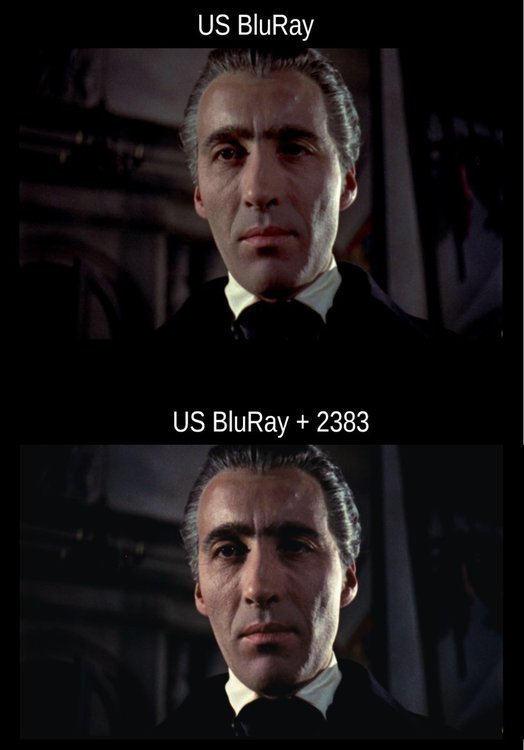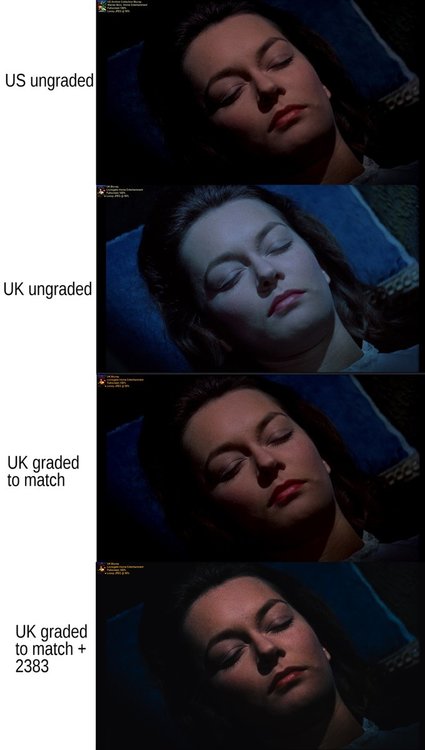
Geffen Avraham
Basic Member-
Posts
47 -
Joined
-
Last visited
Everything posted by Geffen Avraham
-
Logmar working on new 15 perf 65mm film camera
Geffen Avraham replied to John Shell's topic in General Discussion
Anyone know what's going on with the Adelie? A few weeks ago, Logmar's site had a countdown to a major announcement. Now, it's gone, and the Adelie blogpost is deleted. -
CP-16 batteries are hard to find these days, with Du-All being the only place to get them, and many resorting to DIY solutions. Re-celling an existing pack has previously been tedious and difficult. I'm happy to say that this is no longer the case. BatterySpace currently sells the custom Powerizer battery pack that Du-All uses for their new batteries. It is a 19.2V 1000 mAh NiCd battery pack, compatible with CP-16 chargers, but providing twice the energy capacity as the original NC-4. https://www.batteryspace.com/custom-nicd-battery-pack-19-2v-1000-mah-offset-2x8-with-open-end-wire.aspx Best of all, it is a single, pre-assembled pack, you need only to put it in and solder the positive and negative terminals. I'm extremely clumsy at soldering and making a battery pack by hand is beyond me, but for me this was a quick fix. I'm hoping to make some 3D printable files of the battery case too, so you can print your own.
-
After seeing Dune the other day, I'm inspired to try and replicate the infrared cinematography on film. Rollei sells 100ft bulk loads of infrared film, but from the shape of the box I suspect they are on a 135 core. I've run into this issue before. Arista 100ft rolls come on a film core, but Kentmere rolls come on a 135 core. I've hand-rolled film from one to the other before, but it's tedious and the film came out scratched in development. Does anyone have experience spooling 100ft of film from one core type to another? Should I try to make a 3D printed machine to do it? What's the best way to prevent scratches?
-
https://www.ebay.com/itm/226038623169?itmmeta=01HRP70HK9FB7V20AKZRPQEGKG&hash=item34a0f3abc1:g:yR8AAOSwbfpl7QzZ&itmprp=enc%3AAQAIAAAA4EJkNRjCB9smXzo2GtTI79%2FDij1%2Bas%2BzXPNMXGwCDf%2F7tVO8Ke0s384o%2F3oTzocL7ahQoJ0JenJ2feW7HDHBZX7YwxumGGYqdPDzoNb408Up78a%2BVPCGrUvM5rhoep9hY%2BeMs9PimVKARHR1sWg1XvNXvj4K2TUMqDoI2V64jq%2BQ2gLDYojZ6toc%2F%2Bj2eSDETnFEUULX%2FZRhNeRp5UE5iYZVAtb%2BOoi4EFnbACQfyFq7xXpeuSTN8NCU3at4l5Fn3%2BD9FoH2L%2BRAN2kEOmmnPcjImms3KzpvJRNbZVh82YPe|tkp%3ABk9SR9iZgsfFYw Check this out.
-
I'm aware of the Wilcam W-4, the Fries Ultra 70, and Bruce McNaughton's 15/70 camera. Logmar is also building one now. Some of IMAX's own cameras are branded MSM, which means they were built by Marty S. Mueller. I don't know about their other cameras though. There's also a Photosonics handheld camera that shoots 14-perf 70mm at 22 fps.
-
Lomo Standard Speed 35mm f2.2 in Oct18 mount
Geffen Avraham replied to Alexander Boyd's topic in Cine Marketplace
Dear Olex, What is the cost to rehouse an OCT-18 lens to PL? Thank you -
This is quite a fascinating camera. I believe NASA used these to film rocket launches. They used giant military tracking rigs, though maybe a gear head from the Mitchell era will do the trick too. You will absolutely need a machine shop, because it likely uses Type 1 aerial film, you will need to modify the pulldown claw and registration pins to 65mm perfs. CinemaGear can almost certainly do it for you, but it will likely be pricey. I have a PhotoSonics 10B, another NASA 70mm camera I'm currently trying to convert to 65mm. I specifically got the rotating prism model, because I feel more confident in my ability to design replacement transport wheels with new perfs than to re-engineer a Mitchell mechanism. These cameras' motors also run on 208V 3-phase power. You will need a special generator to get them working in the field. This camera is not practical for narrative work - but for documentary recording of events like rocket launches, volcanic eruptions, etc, with a proper crew, it could provide beautiful images.
-
Eclair Flea Market
Geffen Avraham replied to Gregg MacPherson's topic in Marketplace Listings Under $200 / €200
That's a good find! The fellow who was looking to buy a 16mm camera the other week should consider this. -
Does anyone know what the mechanical details of the threads on this mount are?
-
CP-16 to TS would be great for me - as would OCT-18. Although maybe I should just send my old Lomos to be rehoused already.
-
Are film-outs to IMAX 15/70 still done at “only” 4K ??
Geffen Avraham replied to John Shell's topic in Post Production
Not directly related to film recorders, but the talk of those big high-maintenance machines reminded me of the Spirit DataCines being sold for $9,000 these days, and how this forum was dissuading people from getting them. Hence my mind drifting to more convenient machines like Cintels. What's the workflow like with a ScanStation? I've never used one. -
It's not fake to my knowledge, it's a fellow on Facebook named Jamie Welton, https://www.facebook.com/groups/2248960670/user/650315100/ This camera is also listed by him on eBay: https://www.ebay.co.uk/itm/364755545778?itmmeta=01HR0NS4Z0VZ3XV17HNVVFVQZ3&hash=item54ed1feeb2:g:B~IAAOSwXPpl3OoS
-
Are film-outs to IMAX 15/70 still done at “only” 4K ??
Geffen Avraham replied to John Shell's topic in Post Production
Man I wish Blackmagic would make a Cintel with a new imager, and perhaps an RGB illuminator and monochrome sensor. No other professional scanner is plug-and-play like that, getting an imager capable of 4k S16 scans would make it perfect for my use. -
There are a couple of running eclairs being sold soon on Arriflex.co.uk The one on there right now is not in great cosmetic condition, but it seems to run fine and is inexpensive.
-
I will also point out that there is a GSMO on eBay right now. There were two at the time of the original post. I do not own one however, so I do not know much about it, and it seems few people do so it may be difficult getting support for one. I do have two CP-16s, a functioning CP-16A and a CP-16R I am still repairing. I have not used either of them yet, they are fairly recent. My suggestion for eclairs is to find them somewhere other than eBay, they are usually more expensive there. Facebook and Craigslist are where I got mine. There is a relatively inexpensive Aaton LTR for sale in Vancouver if you are willing to fly there. It is standard 16 and is of unknown maintenance condition, but comes with lenses. https://vancouver.craigslist.org/van/phd/d/vancouver-aaton-ltr-16mm-camera-with/7715168941.html
-
Selling FUJI 16mm and 35mm Stock
Geffen Avraham replied to Moritz Moessinger's topic in Cine Marketplace
Could use some Eterna Vivid. -
I'll throw into the ring something no one has suggested, which is why not get a Standard 16 GSMO? They use the same batteries and lenses as CP-16s, but are lighter and have Eclair/Aaton-like mags, and are solidly built. You can get some on Ebay for $2-3k, pair them with a Zeiss 10-100 and you're good to go. You can get new batteries from Du-All Camera. They will not have a PL mount and only someone like Visual Products will be able to install one, for a price. But with a good zoom lens in sharp condition, you won't need it.
-
I took a further look at Dracula, and while I think they definitely graded it better in the US version, I do not think they applied any print film emulation. I took a shot from the British version, and was able to grade it with simple tools to look almost exactly like the US version. A version with 2383 emulation looks substantially different. This admittedly imperfect and not rigorously scientific analysis leads me to conclude that no complex print emulation was used on the US version - at least that was not already taken from the UK version.
-
also - when digitally-captured films were printed to film for distribution, were they printed in some kind of special gamut like cineon log so they would work well with the 2383? how did they make sure the printed film shown to theatergoers would match the DI they were editing? or was there an entire new layer of contrast and color shifts added in print that they just let happen?
-
Then in that case, is any work taken to replicate the look of contact-printed print film for the digital presentation? Scanned negatives look quite different without print film emulation - or actually being contact-printed. Kodak 2383 LUTs are a dime a dozen today, but how old are they? Are older Blu-Rays giving us a substantially different image color-wise than theatrical moviegoers would have experienced? I have little way of judging for myself, since I don't have any 35mm prints lying around, and apart from Oppenheimer I haven't seen any movies projected from celluloid in years.
-
Could this be one reason why early digitally captured films, like the Star Wars prequels or Apocalypto, look better than your average Alexa-captured Netflix movie? We laud the digital-film-digital process for Dune and the Batman, but did all digitally shot films once do this? Are the Blu-Rays made from scanned 2383, or from the digital intermediate?




